All about the chinoiserie style in the interior
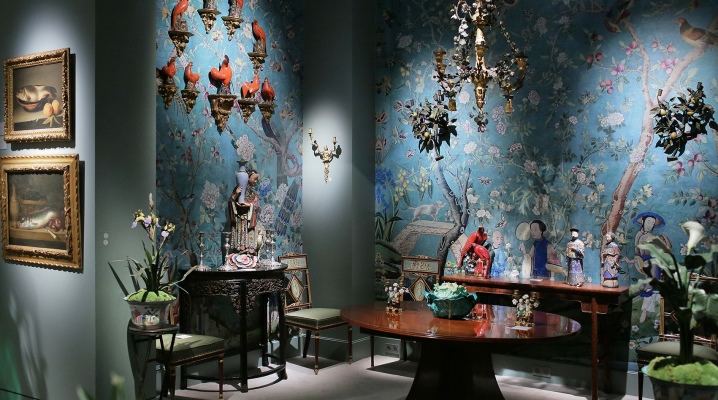
The beautiful French name Chinoiserie means imitation of the Chinese art that came to Europe at the beginning of the seventeenth century, and literally translates as "Chinese". Exotic Chinese goods from the first minute and forever conquered the hearts of Europeans, and since their prices were prohibitive, local craftsmen began to master the science of imitating the Chinese. This is how the chinoiserie style was born.
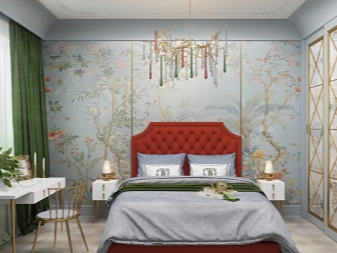
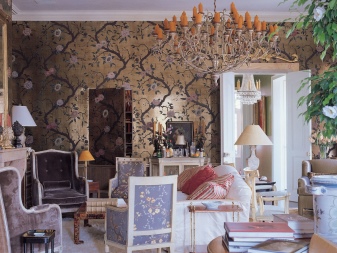
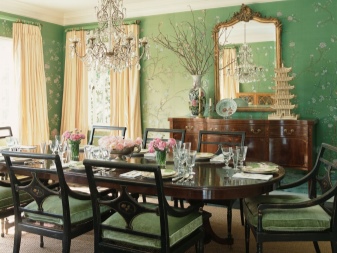
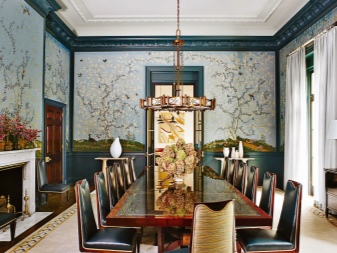
What it is?
At the time of the East India Company, the world knew almost nothing about the eastern mysterious country, and even more so about the secrets in the art of the Celestial Empire. Local masters, imitating the Chinese, could only guess what technique creates singing porcelain, how amazing paints are born that preserve color and depth on fabrics, frescoes for centuries, and even more so they had no idea about the deep philosophy that accompanies every moment of the life of the Chinese from birth and until the last breath.
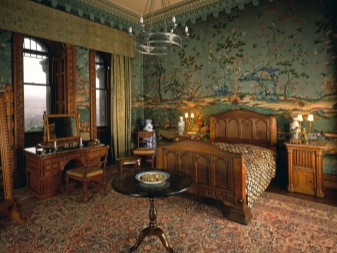
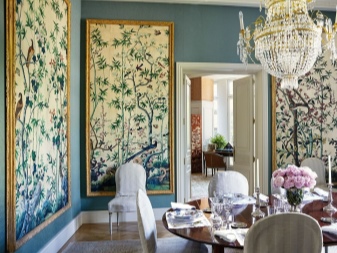
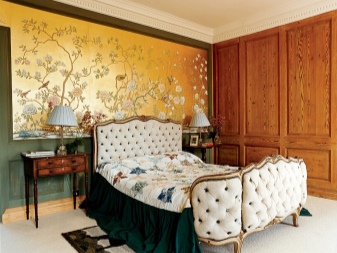

What the Europeans reproduced was not an absolute repetition of Chinese goods, rather, it is a new look at the classics, their vision of the beautiful from the world of heaven.
That's why chinoiserie style is not an exact copy of the Chinese world, but rather a fairy tale about it.


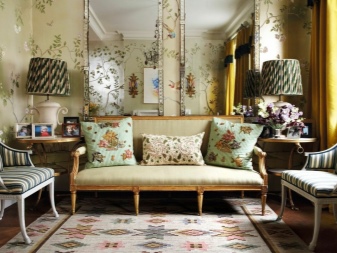
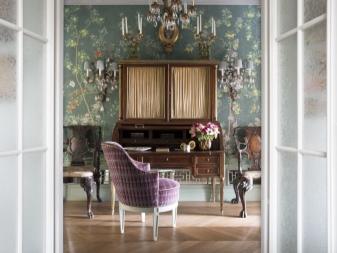
Main elements
Chinoiserie is a tribute to the love of oriental art, one of the branches of the pompous Rococo style. This style has its own characteristics and elements.
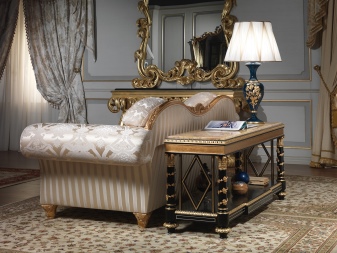
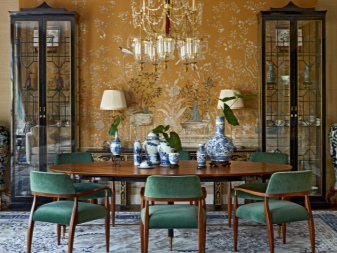
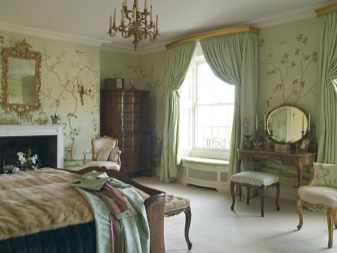
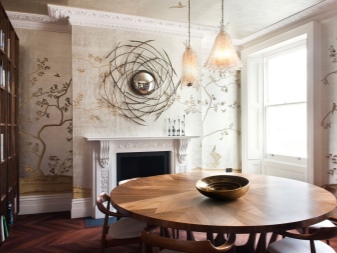
Porcelain
Porcelain and china is probably the most significant legacy given to descendants by the Chinoiserie style. Europe managed to replicate Chinese porcelain only in the 18th century. It should be noted that according to historical annals, for the most part, European residents of the 17th century got poor-quality porcelain that did not pass the selection for the palace of the Chinese emperor. Porcelains 1 and 2 of the selection were accepted by the Beijing court, the rejected ones were returned to the manufacturer. At the same time, no records were kept, which allowed Chinese traders to send their products overseas, where its quality was not satisfactory. The East India Company was making fabulous profits by participating in such re-sales.
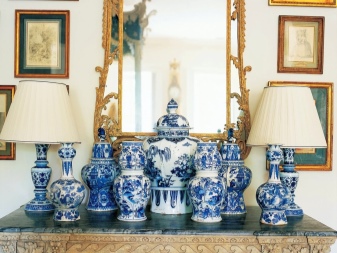
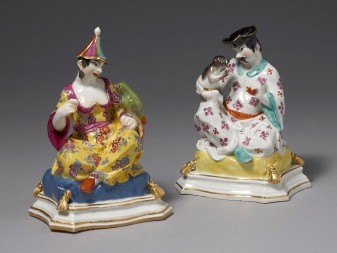
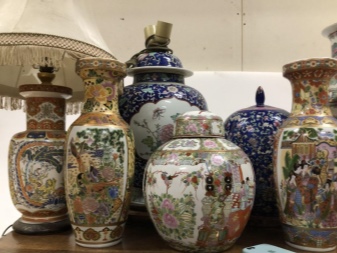
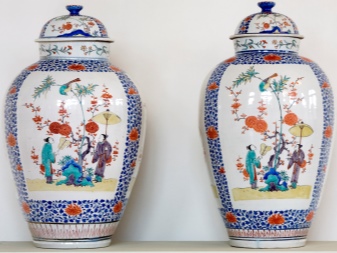
The finest dishes, decorative vases, decorated with blue and colored painting, were a sign of wealth and refined taste in the aristocratic houses of Europe.
At that time, there was a fashion for the collection of porcelain products.... Such motifs became very popular in architecture - entire complexes and summer residences were decorated with white and blue imitation, ceramic tiles.
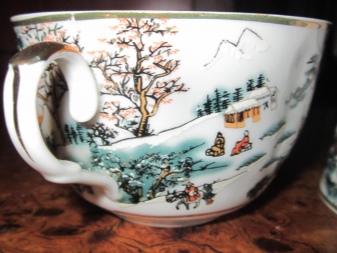
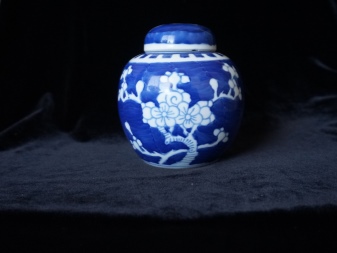
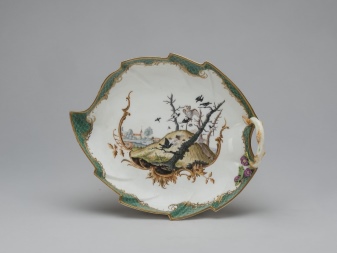
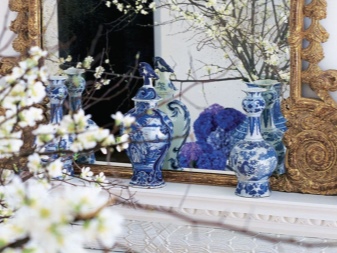
Silk
These are silk, hand-painted panels and Chinoiserie wallpaper. On rice paper or a silk base, beautiful paintings were created depicting birds, gardens and flowers, scenes from the court life of the nobility, sometimes all this was complemented by skillful embroidery. We used bright contrasting colors that create volumetric effects, or, conversely, muted tones, a pastel palette.
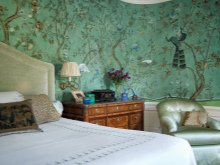
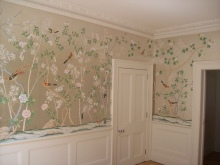
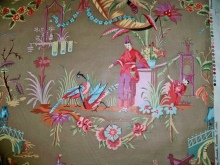
Varnish
Lacquered furniture with gold appeared in Europe, when sailing merchants from distant and mysterious China began to bring wonderful chests of drawers, wardrobes decorated with intricate intricate patterned carvings and drawings, varnished, which in those days was a very unusual phenomenon. The most complicated process in Chinese art - the creation of expensive furniture - has up to 30 intermediate stages of varnishing. Moreover, each of them requires the strictest adherence to its own temperature and humidity regime.The Chinese used the methods of surface painting and lacquer carving, which means alternating patterned carving, polishing, painting and varnishing.
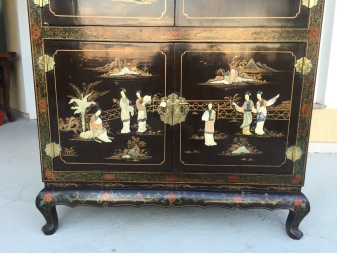

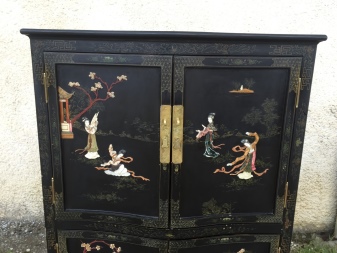

No less popular was the red-lacquered furniture covered with intricate carvings. The masters achieved a bright red, carmine color by adding cinnabar (a mercury mineral) to the lacquer composition. Skilled Chinese cabinetmakers used more than just carving to decorate furniture. Polychrome painting of the finest design was held in high esteem - the application of an endless variety of multi-colored ornaments, heraldic symbols, fantasy stylized images of mythical creatures. The polychrome painting method uses the brightest colors - red, green, blue, gold and silver.
Amazing creations were obtained by using gold lacquer painting on a colored or black background, with an inlaid surface with blue and green changeable mother-of-pearl, tin, pearls, etc.
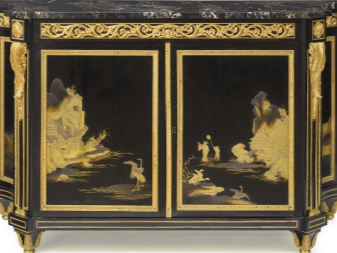
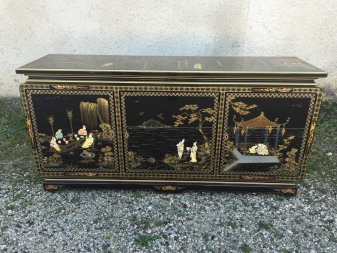
In addition to the main materials, ivory, jade, porcelain, corals were used for inlay. Mirrors were framed with frames using this technique.
Furniture often reproduced the silhouettes of the pagoda - sideboards, bureaus, whatnots and much more. The fabulous price of lacquered furniture was explained by the inaccessibility of lacquer for European masters. At that time, they already learned how to copy furniture using the same materials as the Chinese, but they could not use varnish, since its main component - the resin of the varnish tree - could only be delivered from China, Japan, and Korea.
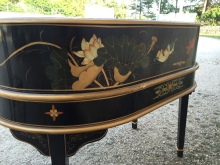
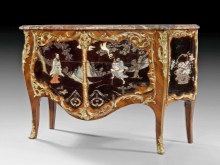
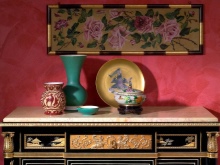
The problem was that by the time it arrived on the mainland, the resin was dry and unusable. Later, analogs of the Chinese varnish were found and substitutes were created.
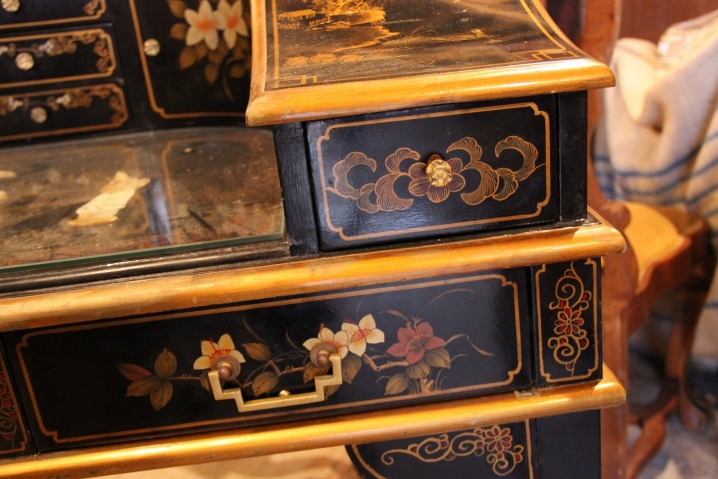
Screens
Chinese screens are an intermediate link between lacquered furniture and silk panels. However, despite this, screens are separated into a separate piece of furniture, quite functional and in demand. With the help of screens, they zoned the space, created cozy corners. An even number of shutters was always used in the screens - 2, 4, 6, 8. Palace products impressed with the art of decoration. The finest carving, rich painting, silk, which sometimes cost as much as the rest of the materials used in the manufacture.
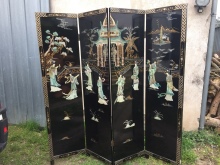
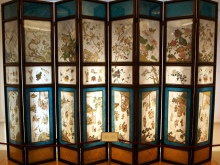
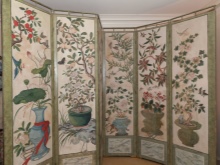
The use of such silk, no less precious paints and materials for inlay, skillful work of wood carvers - all this made screens a work of art.
Scenes from mythological stories, garden and natural landscapes were depicted on silk canvases, paying tribute to tradition. In the dark, candles were lit behind the items, and then the images came to life in the flickering light of the candle flame. From chinoiserie, screens moved to other styles, having undergone some changes.
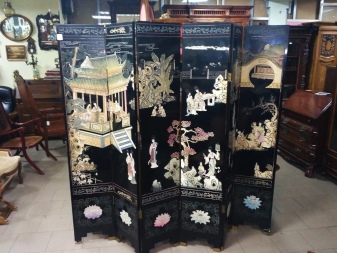
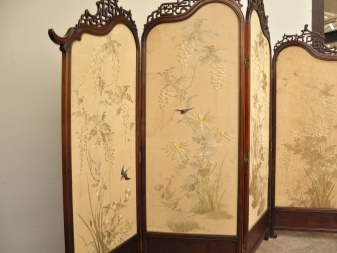
Papier mache
Papier-mâché was used by the Chinese to create cheap types of furniture. During architectural excavations in China, papier-mâché armor and helmets were found, this material was so strong. The composition of glue, wood shavings and paper was covered with many layers of varnish. It was a cheap material, and its plasticity made it possible to create complex shapes. Such furniture was created up to the XX century.
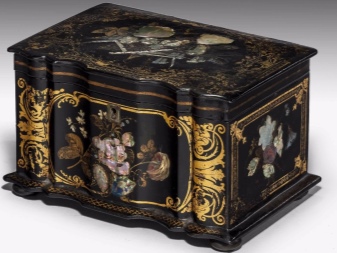
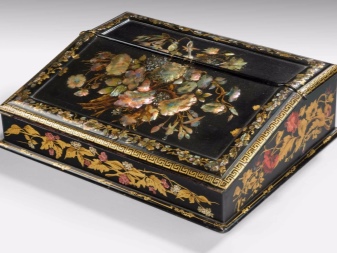
Watercolor drawings
Traditional drawings were peonies, pagoda images, scenes from the life of the Chinese nobility, beautiful landscapes, picturesque gardens, mythological flora and fauna. The same bright colors were used in the wallpaper painting - red, blue, green, yellow, as well as their shades, gold stamping.
A special kind of stylization is characteristic of watercolor painting, which makes it unmistakably recognizable: many details, comical and fantastic scenes. A gold and silver background, glass and mother-of-pearl substrate, images in silver are used.
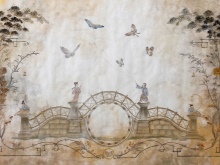
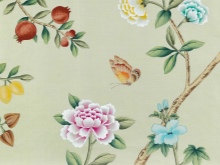
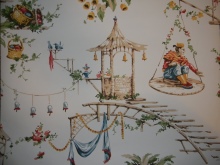
Chinoiserie does not tolerate faded, blurry tones and colors.All the colors here are fabulously beautiful, clean, bright tones and shades are used - gold, yellow, red, blue, green, blue and pink.
All this is the result of a fabulous idea of China, half imagined and invented by Europeans.
Chinoiserie watercolors are traditional wall painting with watercolors. Differs in jewelry technique of execution of the smallest details, skilful drawing of even microscopic elements, images of butterflies, flowers, birds, dew drops and sun rays are transmitted with extraordinary accuracy.
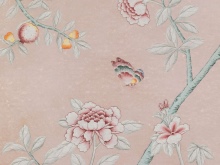
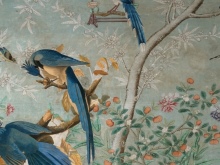
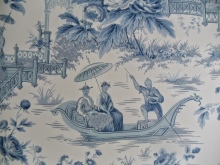
How to apply in interiors?
In Russia, as in the rest of the world, the chinoiserie style is used in interior design, and it all started with Peter I. On his order, a Chinese palace was created in Oranienbaum by the architect Antonio Rinaldi, who was considered a master of chinoiserie.
Consider how the style is applied in modern interiors.
- Bedroom, decorated in this exotic style, implies chinoiserie wallpaper on the walls. Now manufacturers offer a huge number of patterns and shades, for the bedroom the closest will be calm, unsaturated warm tones - light green, cream, beige and coffee, caramel and greenish brown.
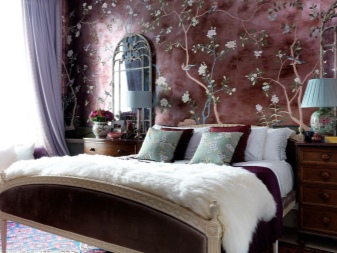
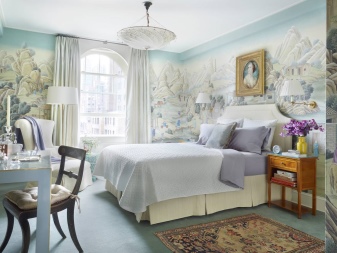
- A stylized frame can be the ideal headboard for your bed.decorated with traditional Chinese motives. Silk wall panels with floral and plant motifs, bedside tables and dressing table, made in traditional Chinese style lacquered furniture, will harmoniously complement the interior.
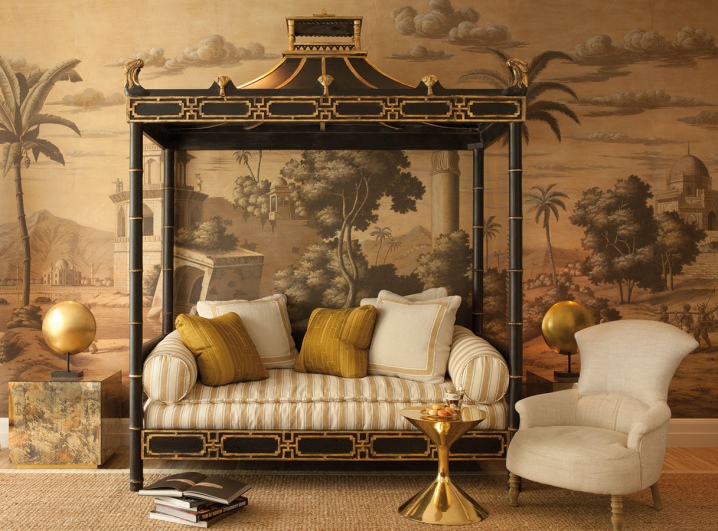
- To decorate an American living room with chinoiserie notes it is enough to focus on the walls by choosing one of the painting styles. When choosing wallpaper, it is best to focus on painted silk canvases. You can choose one of the types of hand-painted. Ornamental painting with images of birds and animals, scenes from the life of the Chinese nobility looks great. Such drawings can be done with watercolors.
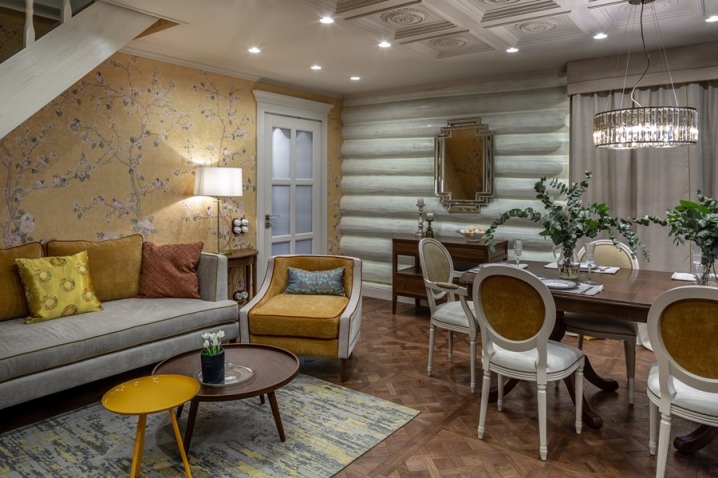
- More complex and expensive painting technique - This is a stylization for Chinese black varnishes. A spectacular sight when the artist applies blue, gold, green, pearlescent varnishes on a deep matte black background. A living room in this style resembles a precious lacquer box. It should be remembered that excessive saturation of space with black negatively affects perception - the eyes quickly get tired.
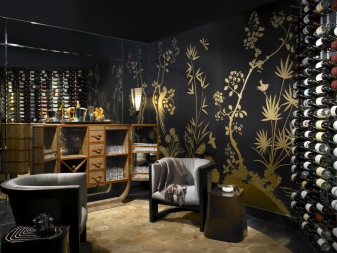
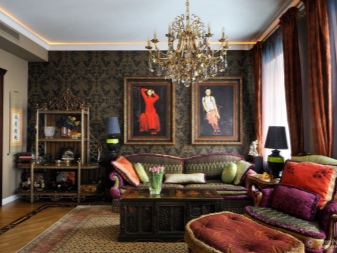
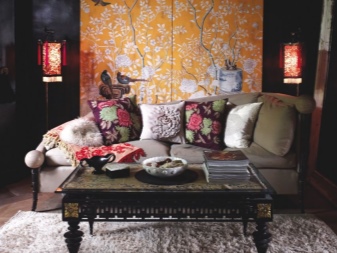
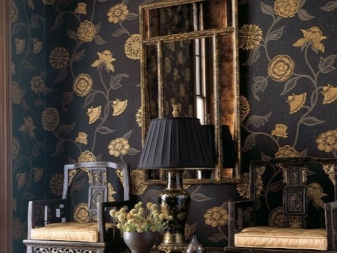
- Chinoiserie-style corridor - light painting on the walls, wallpaper with Chinese motifs, silk panels on the walls, lacquered wooden shelves or papier-mâché, framing doorways with baguettes resembling mirror frames in the Chinese direction.
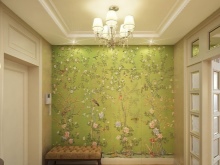

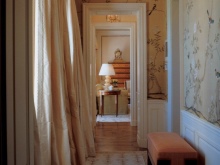
Stylish examples
- Black lacquered wall painting - an unusually effective technique. Blue, red, gold, silver and mother-of-pearl varnishes are used on a matte background.
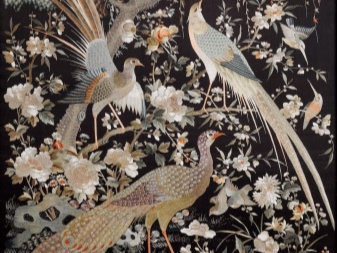
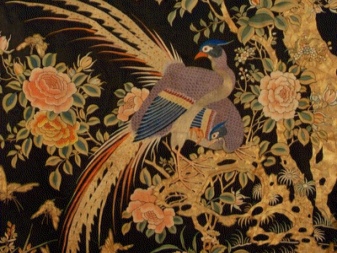
- Handmade silk wallpaper with traditional motives. Floral ornamental painting, harmoniously inscribed figures of people and stylized outlines of a pagoda.

- Bedroom mural in rich colors using traditional plant patterns. Complementing are lacquered bedside tables with drawers.
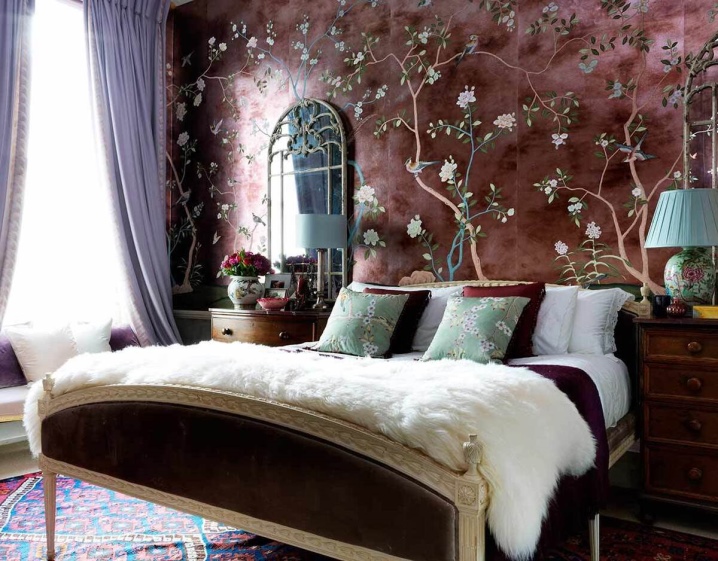
- Another interesting option for a bedroom, decorated in beige and pink colors. The emphasis is placed on the wall, which is the head of the bed.
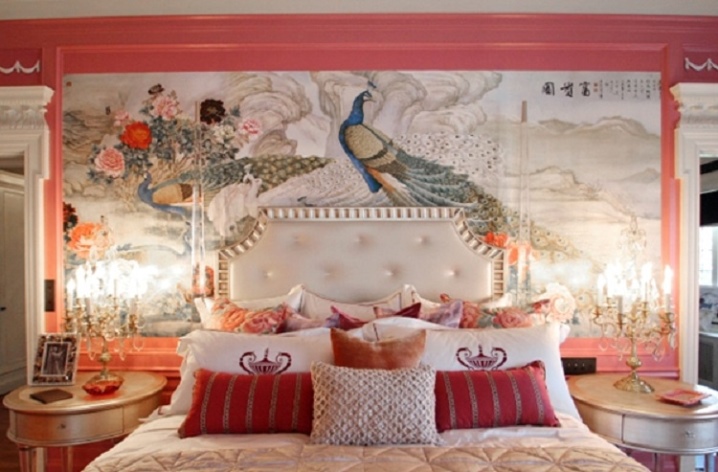
- Living room with wallpaper in chinoiserie style. A unique combination of emerald, gold and black colors. A spectacular addition is a pagoda figurine on a lacquered coffee table.

- Silk wallpaper on the wall with drawings of fairy birds... A large volumetric panel in the center with a panoramic image, a lacquered coffee table, a lacquered sideboard with many drawers and shelves.
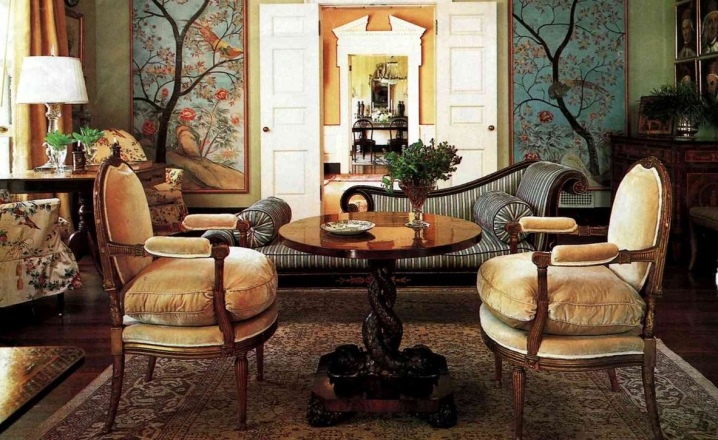
For the chinoiserie style, see below.













The comment was sent successfully.